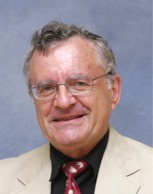 Innovation Blog
Innovation Blog
See, Think, Wonder: What Innovators Can Learn from Kindergarten
By Shlomo Maital
My grand-daughter Agam is six years old, and is finishing kindergarten; she will begin Grade One in the Fall.
Agam’s kindergarten is first-rate. One of the things she learned there (in addition to reading!) is an exercise known as See Think Wonder. A variation of it is Feel Think Wonder.
Here is how it works:
1. See. REALLY LOOK at something. Mostly, we look at
things, but we do not see them. REALLY see them. In every detail.
Practice SEEING! See things we miss normally, out of haste. Have you
really seen your eyebrows lately? What did you miss?
2. Think. Think about what you see. Reflect on it. Ponder,
analyze, compare, contrast, examine.
3. And most important: WONDER! That is, imagine and
dream. What if it were different? What if it were impossibly amazing?
What if I looked at myself in the mirror, and became 6 feet 6 inches
tall? WONDER — leading to action!


 There are some qualities that successful entrepreneur possess. People perceive them to be lucky but if you ask them, then you know the answer is not being lucky. It is about being optimistic along other qualities.
There are some qualities that successful entrepreneur possess. People perceive them to be lucky but if you ask them, then you know the answer is not being lucky. It is about being optimistic along other qualities.
 WASHINGTON -- The House passed two bills that would provide community banks with cheap capital to increase lending to small businesses and give investors a tax break for purchasing stock in small corporations.
WASHINGTON -- The House passed two bills that would provide community banks with cheap capital to increase lending to small businesses and give investors a tax break for purchasing stock in small corporations. According to a psychiatrist, the thought that artists are inspired by drugs and alcohol to create magnificent work of art, is a dangerous myth. The reason behind it is that they suppress creativity, rather than boosting it.
According to a psychiatrist, the thought that artists are inspired by drugs and alcohol to create magnificent work of art, is a dangerous myth. The reason behind it is that they suppress creativity, rather than boosting it. A colleague catches Dr. Rafi Hofstein on the way into his office and outlines a project snag. Dr. Hofstein, the chief executive officer of MaRS Innovation, a new entity charged with turning Toronto scientists’ ideas into products and profits, is annoyed – both by the interruption and the colleague’s insistence the problem will cause delays. “We have to sign today,” Dr. Hofstein says tersely, already halfway into his office, “so make sure we sign on something that’s agreeable to us.” The door shuts.
A colleague catches Dr. Rafi Hofstein on the way into his office and outlines a project snag. Dr. Hofstein, the chief executive officer of MaRS Innovation, a new entity charged with turning Toronto scientists’ ideas into products and profits, is annoyed – both by the interruption and the colleague’s insistence the problem will cause delays. “We have to sign today,” Dr. Hofstein says tersely, already halfway into his office, “so make sure we sign on something that’s agreeable to us.” The door shuts. California has by far the largest number of tech workers. According to TechAmerica Foundation’s Cyberstates 2010 report, it has 993,000 tech workers, and its largest center is Silicon Valley.
California has by far the largest number of tech workers. According to TechAmerica Foundation’s Cyberstates 2010 report, it has 993,000 tech workers, and its largest center is Silicon Valley.
 Innovation Blog
Innovation Blog
 As world leaders gather in Canada this weekend, the nations with
the most influence won't be the high-tech mavens. Joel Kotkin on why
traditional industries still matter in the post-information age.
As world leaders gather in Canada this weekend, the nations with
the most influence won't be the high-tech mavens. Joel Kotkin on why
traditional industries still matter in the post-information age.  Although the concept of venture capital has been around for well over two hundred years, it is only really in the last twenty or thirty years that companies have specifically sought to boost entrepreneurialism and profit through the development and growth of successful businesses. Many of the venture capital companies trading today were initiated in the eighties or nineties.
Although the concept of venture capital has been around for well over two hundred years, it is only really in the last twenty or thirty years that companies have specifically sought to boost entrepreneurialism and profit through the development and growth of successful businesses. Many of the venture capital companies trading today were initiated in the eighties or nineties. Do you have what it takes to be an
entrepreneur, takes risks, start your own business and fulfill your
dreams of financial independence and be your own boss?
Do you have what it takes to be an
entrepreneur, takes risks, start your own business and fulfill your
dreams of financial independence and be your own boss? uesday, he expects to lock up $1.5 million in funding for his new
start-up,
uesday, he expects to lock up $1.5 million in funding for his new
start-up, 
 This morning, Boston Mayor Thomas Menino is expected to announce his
intention to establish a cleantech incubator in Boston's "
This morning, Boston Mayor Thomas Menino is expected to announce his
intention to establish a cleantech incubator in Boston's " It doesn’t matter how long you’ve been blogging, how many subscribers you have or even if you’re still waiting to get your first comment — we’re all want to become better bloggers. You want to continually increase your reputation as someone who knows their stuff and set yourself as valuable to readers. With that in mind, here are six tips to help you instantly improve your blog. That’s right; you can significantly improve your blog today.
It doesn’t matter how long you’ve been blogging, how many subscribers you have or even if you’re still waiting to get your first comment — we’re all want to become better bloggers. You want to continually increase your reputation as someone who knows their stuff and set yourself as valuable to readers. With that in mind, here are six tips to help you instantly improve your blog. That’s right; you can significantly improve your blog today. As the economy edges toward recovery, the best job-creation policies Congress can implement may well focus on allowing U.S. ingenuity to flourish.
As the economy edges toward recovery, the best job-creation policies Congress can implement may well focus on allowing U.S. ingenuity to flourish. 